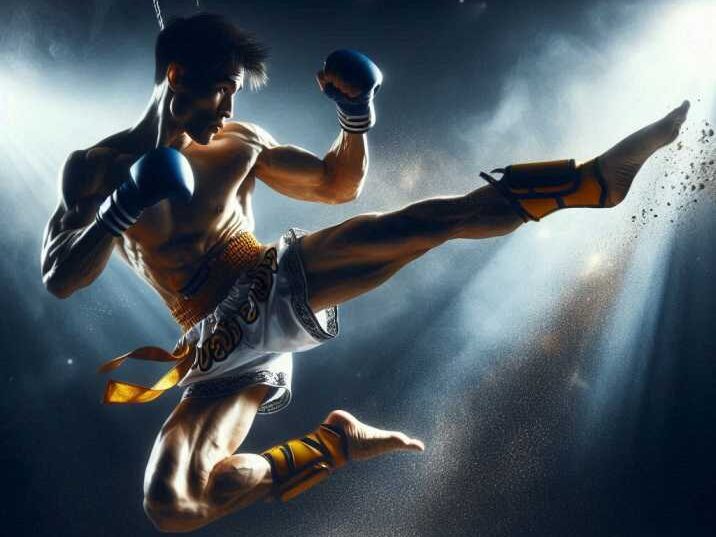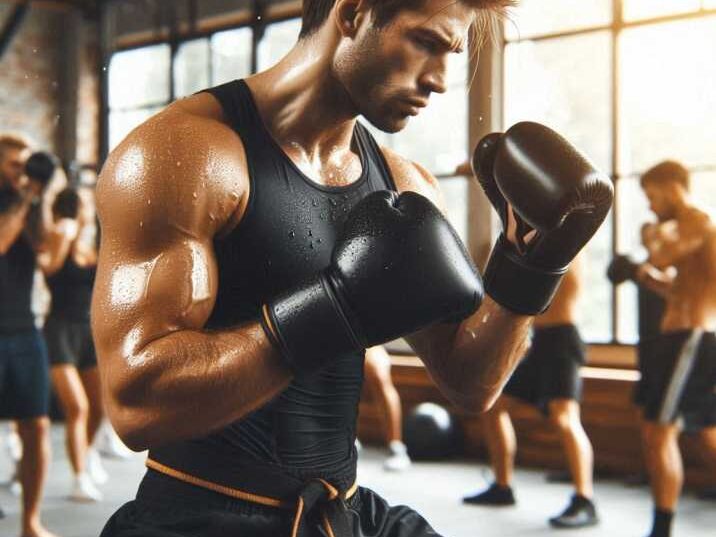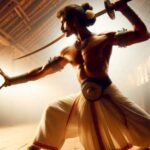Martial arts are an amazing way to learn self-defense, stay fit, and improve concentration. But with so many different martial arts styles, you might wonder: What is the most powerful martial art? This article will explore some of the world’s strongest martial arts, looking at their unique strengths, techniques, and benefits. Whether new to martial arts or already familiar with them, this guide will help you understand which styles are the most effective for strength and self-defense.
Introduction
Table of Contents
Martial arts are more than just learning how to fight. They teach you discipline, build physical strength, and improve focus. Training in martial arts can benefit kids and adults alike by teaching skills that can be used in real-life situations. Many people practice martial arts to stay in shape and defend themselves. But not all martial arts are the same—some are known for being incredibly powerful.
This article will explore seven martial arts that are known for their power. We’ll look at why they are considered the strongest, how they improve focus, and how they can help in self-defense.
The 7 Most Powerful Martial Arts
1. Brazilian Jiu-Jitsu (BJJ)
Brazilian Jiu-Jitsu, or BJJ, is a ground-fighting martial art that teaches you how to use leverage, balance, and precise techniques to control and submit opponents. It’s particularly useful because it allows a smaller, weaker person to overcome a larger, stronger opponent using skill rather than brute force.
- Why it’s powerful: BJJ relies heavily on technique, which is why it’s so powerful. Instead of using strength, practitioners use leverage and position to gain control over their opponent. In close combat, a skilled BJJ practitioner can take down and submit a much larger opponent, making it ideal for self-defense. This is especially effective in situations where size and strength could be an advantage for the opponent, but BJJ counters that with superior grappling techniques.
- Real-life use: BJJ is a fundamental discipline in Mixed Martial Arts (MMA) and is heavily used in competitions like the UFC. Fighters use BJJ to control their opponents on the ground, seeking submissions such as chokes or joint locks. It’s also effective in street defense, where taking the fight to the ground often neutralizes an attacker’s advantage in striking or strength.
- Focus improvement: Practicing BJJ requires mental focus because it involves patiently waiting for the right opportunity to execute a submission. You have to anticipate your opponent’s moves, which improves concentration, problem-solving, and decision-making under pressure. BJJ forces practitioners to stay calm in uncomfortable situations, teaching them patience and strategic thinking, which helps with focus both in training and in everyday life.
2. Muay Thai
Muay Thai, also known as Thai boxing, is a powerful striking martial art from Thailand. It’s often called the “Art of Eight Limbs” because it uses fists, elbows, knees, and shins to strike opponents. This makes it one of the most versatile and destructive striking arts.

- Why it’s powerful: Muay Thai’s power lies in its ability to deliver extremely strong strikes from multiple angles. Practitioners use their whole body to generate force, making kicks, punches, and knee strikes particularly devastating. The use of elbows and knees adds another layer of danger, as these parts of the body are hard and can deliver knockout blows or cause severe damage. Muay Thai’s clinching techniques, where fighters control each other at close range, also allow practitioners to dominate their opponent in close combat.
- Real-life use: Muay Thai is frequently used in professional kickboxing and Mixed Martial Arts (MMA) due to its powerful strikes. Fighters rely on Muay Thai for its ability to overwhelm opponents with a combination of fast, powerful strikes. In self-defense situations, Muay Thai’s strikes can incapacitate an attacker quickly, and its techniques are also highly effective in street fights, where quick, decisive action is needed to protect oneself.
- Focus improvement: Practicing Muay Thai develops quick thinking and precision. In a fight, you have to quickly react to your opponent’s movements and find the best opportunities to strike. This level of concentration sharpens mental focus and reflexes. It also builds discipline, as practitioners must learn to perfect their techniques and time their strikes, which improves focus not just in martial arts but also in other areas of life, like school and work.
3. Krav Maga
Krav Maga is a martial art developed for the Israeli military that combines techniques from various fighting styles, including boxing, wrestling, and street fighting. It’s designed for real-world self-defense and emphasizes neutralizing threats quickly and efficiently.
- Why it’s powerful: Krav Maga is focused on practical, no-nonsense techniques that can be used to stop an attacker as fast as possible. It teaches brutal and effective moves, like striking vulnerable parts of the body (eyes, groin, throat) and using the environment to defend yourself. Krav Maga also prepares you to defend against weapons and multiple attackers, making it highly adaptable to dangerous situations.
- Real-life use: Krav Maga is widely taught to military forces, police units, and security professionals due to its effectiveness in real combat scenarios. It’s designed to be easy to learn and quick to apply in life-threatening situations, such as disarming an attacker or defending against multiple opponents.
- Focus improvement: The intense training in Krav Maga requires you to be constantly aware of your surroundings, forcing you to stay alert and make split-second decisions under pressure. This heightened sense of awareness and quick decision-making can improve focus, especially in stressful situations, making it valuable not only in combat but also in daily life.
4. Karate
Karate is a traditional Japanese martial art that focuses on powerful strikes using hands and feet. It emphasizes strong blocks and disciplined movement, making it one of the most practiced martial arts in the world.
- Why it’s powerful: Karate teaches practitioners to develop fast, powerful strikes, like punches and kicks, that can incapacitate an opponent with a single blow. In addition to offense, Karate’s blocking techniques allow practitioners to effectively defend against attacks. Beyond the physical aspect, Karate builds mental toughness and discipline, which are critical in a fight or self-defense scenario.
- Real-life use: Karate is popular in martial arts competitions like the Olympics and is often used in self-defense. Practitioners learn to maintain balance, distance, and precision, allowing them to protect themselves effectively in various situations.
- Focus improvement: Karate training emphasizes self-control, respect, and discipline, which are key to improving mental focus. Students are taught to remain calm and controlled under pressure, honing their ability to concentrate not only in martial arts but also in school, work, and other activities.
5. Judo
Judo is another traditional Japanese martial art that focuses on grappling, throws, and submission holds rather than strikes. Practitioners aim to use their opponent’s strength against them, making Judo an effective self-defense system for people of all sizes.
- Why it’s powerful: Judo’s power comes from its techniques of throwing opponents to the ground, where the practitioner can control them using pins and submission holds. The beauty of Judo is that it allows smaller people to use an opponent’s own strength and momentum against them. This makes it possible to take down even a much larger opponent with the right technique.
- Real-life use: Judo is taught to police forces worldwide because it provides a way to subdue suspects without causing serious harm. Judo’s non-striking techniques make it an ideal martial art for controlling an opponent in a way that avoids injury.
- Focus improvement: The complex and technical nature of Judo throws requires intense concentration and focus. Practitioners must think several steps ahead and remain calm under pressure, which helps them improve their mental focus in both martial arts and daily life situations.
6. Taekwondo
Taekwondo is a Korean martial art known for its spectacular, fast, high kicks. As an Olympic sport, it’s recognized for its combination of speed, precision, and flexibility, with an emphasis on using the legs for powerful kicks.
- Why it’s powerful: Taekwondo’s emphasis on high, fast kicks can quickly incapacitate an opponent, especially because kicks generate more power than hand strikes. Practitioners are trained to strike from various angles, making Taekwondo highly effective for creating distance between the practitioner and the opponent while delivering powerful blows.
- Real-life use: Taekwondo is commonly used in competitive sports like the Olympics, but it’s also a highly effective martial art for self-defense. Practitioners can defend themselves with a variety of kicks and strikes while staying at a safe distance from their attacker.
- Focus improvement: Taekwondo training requires balance, coordination, and mental precision. Mastering the high kicks and quick movements sharpens focus and improves physical control, which can carry over to academic performance or other activities requiring concentration.
7. Boxing
Boxing is one of the most popular and ancient combat sports, focusing on punches, footwork, and head movement to evade attacks. It’s known for its straightforward approach to combat, relying on hand strikes and strategic defense.

- Why it’s powerful: A well-trained boxer can deliver knockout punches that end a fight in seconds. Boxing also teaches defensive techniques, like dodging and blocking, which can prevent the opponent from landing strikes. Endurance and conditioning are key components of boxing, which makes practitioners not only powerful but also physically tough and resilient.
- Real-life use: Boxing is extremely effective in self-defense situations. A trained boxer can quickly incapacitate an attacker with powerful punches and use footwork to evade danger. It’s a practical martial art that can be applied in real-world situations where speed and power are crucial.
- Focus improvement: Boxing requires intense mental focus. Practitioners must concentrate on their opponent’s movements, timing, and positioning while planning their own attacks. This level of strategic thinking improves mental sharpness and decision-making, both inside and outside the ring.
Table of Information: Key Aspects of Powerful Martial Arts
| Martial Art | Focus Area | Real-Life Use | Self-Defense |
|---|---|---|---|
| Brazilian Jiu-Jitsu | Grappling and submissions | MMA, Street Defense | Very effective |
| Muay Thai | Striking with limbs | Kickboxing, Street Defense | Highly effective |
| Krav Maga | Real-life combat scenarios | Military, Police | Extremely effective |
| Karate | Striking and blocking | Competitions, Self-Defense | Effective |
| Judo | Throws and grappling | Police, Self-Defense | Effective |
| Taekwondo | Kicks and fast movement | Sport, Self-Defense | Effective |
| Boxing | Punching and footwork | Sport, Self-Defense | Effective |
Conclusion: The Power of Martial Arts
Choosing the most powerful martial art depends on what you’re looking for. Each of these martial arts offers unique techniques that make them powerful in different ways. Whether you’re focusing on self-defense, fitness, or discipline, martial arts training can improve your focus and provide you with valuable life skills. With dedication and practice, you can master any of these powerful styles and become stronger both mentally and physically.
FAQs
1. Which martial art is the strongest?
The strongest martial art depends on the situation. For self-defense, Krav Maga and Brazilian Jiu-Jitsu are often considered the most effective.
2. Can a smaller person defeat a bigger person in martial arts?
Yes, martial arts like Brazilian Jiu-Jitsu and Judo teach techniques that allow smaller people to control larger opponents.
3. Is Muay Thai good for self-defense?
Yes, Muay Thai is highly effective for self-defense due to its powerful strikes with hands, feet, elbows, and knees.
4. What martial art builds the most mental focus?
All martial arts build mental focus, but Karate and Judo are known for emphasizing mental discipline and concentration.
5. Is boxing a martial art?
Yes, boxing is considered a combat sport and martial art, known for its powerful punches and defensive strategies.


